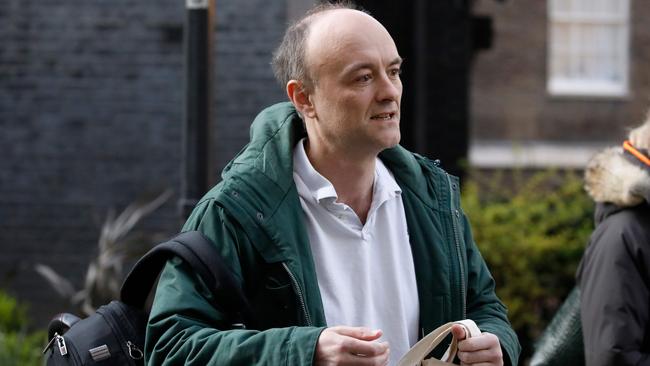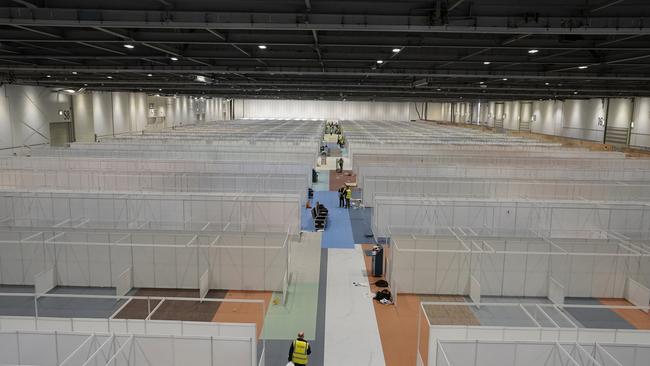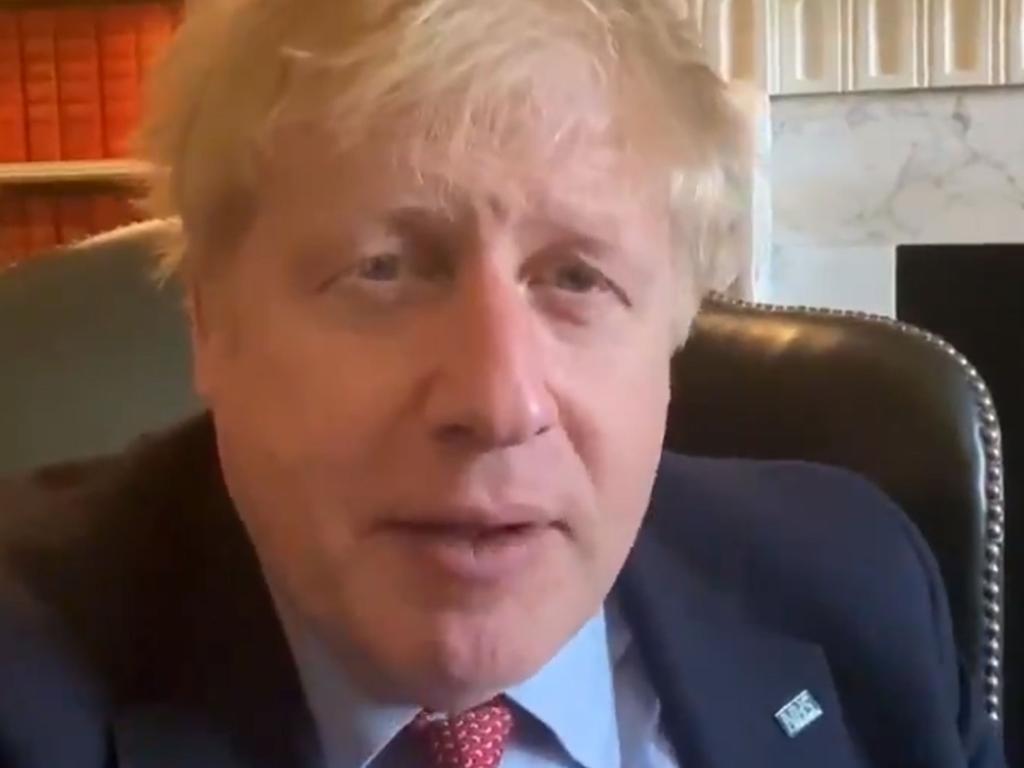Coronavirus: Illness, fear, isolation: Inside No. 10 as Boris Johnson hunkers down
UK prime minister Boris Johnson is alone in Downing Street, Whitehall is in disarray and political self-preservation is under way.

Even before Boris Johnson learnt, at around midnight on Thursday, that he had tested positive for the coronavirus, it had already infected the government at its highest levels, changing the way people work and contributing to a feeling of embattlement. “It has made real for everyone out there what was already happening inside,” said a government aide. “Huge numbers of people are working from home or wondering when they are going to get it.” It was hard for many not to feel their spirits sink as their leader fell ill during the battle with an unseen enemy.
Johnson chaired Friday’s 9.15am meeting of his COVID-19 “war cabinet” by video link from his flat above No 11, where he is now self-isolating, plates of food being left on the floor outside for him. In his stead the No 10 press conference was to have been fronted by Matt Hancock, the health secretary. Within an hour it emerged that he too had tested positive. Next came the news that the chief medical officer, Chris Whitty, was also showing COVID-19 symptoms.

These personal tests capped a fraught week for ministers in which questions about their preparations grew. With Johnson’s team stretched to the limits, cracks — between politicos and civil servants and even between ministers — were beginning to show.
“This is the key week in terms of preparation,” a minister said. “Everyone’s rushing around trying to build up the sea walls before the tsunami strikes.” A Tory aide added: “I don’t think people appreciate the scale of how disorganised things are inside. It’s total anarchy, with everyone working from home. There’s no reliable data and people are overwhelmed.”
For close observers of Johnson, the clue that things had got serious was in his hair. As the prime minister made his address to the nation on Monday evening – announcing a lockdown of the country not seen since wartime – the blond haystack was neater than normal. “It looked as if he had brushed it,” one aide said. “You know when he’s not messing it up with his hand that he’s in the zone.”
Johnson’s speech marked the culmination of several days of growing pressure to put aside his libertarian instincts and order Britons to stay at home.

There are now two sources of discord. The first is the government’s pivot two weeks ago towards a full suppression strategy and questions about why it did not happen sooner. The second is whether it now ought to go further.
The first element has caused friction between Johnson’s political aides and officials. “The big issue is who is to blame for the fact that the strategy flipped,” said a source. “The scientists have been treated like demigods by the media, but everyone knows there will be an inquiry at the end of this. Now some officials are in massive arse-covering mode. They’re refusing to do stuff because they think it will blow back on them.”
Insiders say civil servants are demanding instructions in writing so that there is an audit trail, a process that began during preparations for a no-deal Brexit.
Great divide
Relations have not been improved by Sir Mark Sedwill, the cabinet secretary, issuing orders in the middle of last week for all ministers and aides to work from home, a process some of Johnson’s team believe has made it harder for them to control what happens across government. “There’s a Spads/officials divide,” a source said. “A breakdown in trust.”
Dominic Cummings, Johnson’s senior aide, has publicly attracted much of the blame for the delay to the pivot, but allies point out that his views were in line with the scientific evidence being offered by Whitty and Sir Patrick Vallance, the chief scientific adviser, which suggested that a tough crackdown would flatten the curve of infections only if it were delayed.

A source who is no friend of Cummings revealed that one of his closest allies helped convince Johnson to change tack. Ben Warner, a data expert who helped win the EU referendum and is now a special adviser in No 10, studied the scientific data and reinforced the need for a change of direction. “Warner realised there was a problem.” Cummings became convinced the previous strategy would not work, and he switched, hard, towards urging a lockdown.
‘I was overruled’
The challenge was to persuade Johnson. Monday’s Cobra meeting featured terse exchanges between the prime minister and Sadiq Khan, the mayor of London, about Johnson’s decision not to close the construction industry. Khan was backed by Nicola Sturgeon, who attends most Cobra meetings via videolink; the Democratic Unionist Party leader Arlene Foster and her deputy, Michelle O’Neill; and Mark Drakeford — the leaders of the devolved administrations in Scotland, Northern Ireland and Wales.
In Khan’s words: “I was overruled by the prime minister, who doesn’t believe construction workers should be at home.” Johnson’s allies hit back at Khan for allowing Transport for London to reduce capacity on the Tube, forcing commuting workers into close proximity.
In retaliation, Labour MPs suggested Johnson’s decision was designed to placate Tory donors in the building industry. However, after an outreach effort to Khan by Michael Gove, the Cabinet Office minister, relations have been patched up between Whitehall and the mayor.
The row reinforced ill-feeling between the governments in London and Edinburgh. Johnson’s team was already furious with Sturgeon for announcing the closure of schools days before Johnson wanted to do so, forcing the government’s hand before it had finalised such central elements as a list of key workers. “This is why the war cabinet is now making decisions and they only go to Cobra at the last minute, to stop Sturgeon forcing the issue,” a senior Tory said. “Cobra is something of a sham because of her.”

The construction row also highlighted tensions between the centre and some ministers. “Inside the cabinet committees there is a growing view that we need to identify the key construction projects at hospitals and nuclear facilities and shut the rest down,” a cabinet source said. “You can’t do social distancing on construction sites.”
Priti Patel, the home secretary, has also pressed for a tougher line, her team letting it be known that she wanted to close the borders to flights from virus hot spots, a briefing that enraged No 10.
That hampered efforts by Dominic Raab, the foreign secretary, to mastermind the repatriation of 100,000 Britons trapped abroad. The Foreign Office is co-ordinating commercial flights but is also prepared to bring in the military to fly people home from far-flung corners of the globe.
Rishi Sunak, the chancellor of the exchequer, is determined to see the aviation industry survive.
‘Decades to repair’
The Institute for Fiscal Studies was predicting an annual budget deficit of $AU 404bn even before he announced plans on Thursday to pay self-employed workers 80 per cent of their earnings, a cost of a further pounds $AU 18,1bn.
Some third-party observers predict a quarterly fall in GDP of 20 per cent and an annual drop of 7.5 per cent. “This will take decades to repair,” said one minister.
The lockdown may yet go further. “Last week one major supermarket was told by the government to prepare for rationing on Saturday morning,” a source said. “A week ago the supermarkets were terrified they would run out of food; now they are not [after imposing limits on shoppers].” Johnson rejected the rationing plan. For now.
The government is building two new “supersurge” field hospitals, such as the one the army is building in London’s ExCeL centre, at the Manchester Central conference centre and Cardiff’s Principality stadium, but is still scouting other sites. “Heathrow’s terminal 5 has been spoken about,” said a government source.

Another option would be to create at Heathrow a quarantine centre for Britons returning on repatriation flights, who are supposed to be isolated for 14 days on their return. “You can’t trust people to do it on their own,” a second source said.
Whitehall officials also predict tensions between London and regional mayors when the virus spreads elsewhere. “The focus so far has been on London, but it will be the West Midlands next.”
Underlying all these fears is how long the public will stomach the lockdown. “If you say three weeks, that’s a manageable figure in people’s heads,” a Tory adviser said. “But no one has had 12 weeks off since they were at school. That’s going to be difficult to manage.” And it will have to be managed by a government that is itself battling the coronavirus.
The Times







To join the conversation, please log in. Don't have an account? Register
Join the conversation, you are commenting as Logout